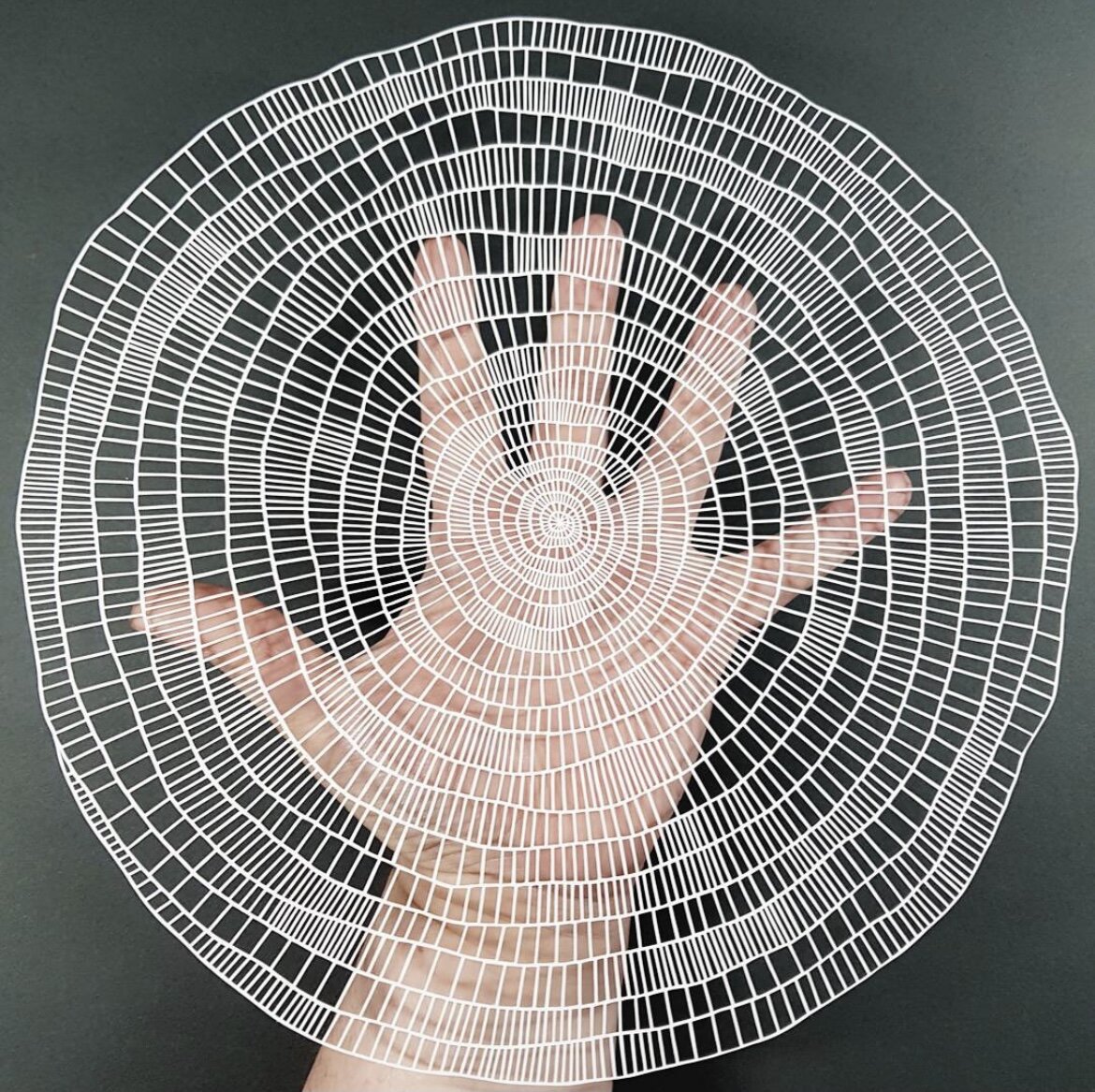
The secret life of paper
by Victoria Thomas
Our digital world strives to become “paperless.” As texts and emoticons replace even love-notes written in scented violet ink, the status of paper is shifting from ordinary to rarified.
In the hands of paper cutting artists, paper has always been treated as precious and meaningful, especially in the centuries before mass-market commercial paper production.
Paper existed in China as early as the 3rd century B.C.E. But the first great breakthrough in paper-making is credited to first-century C.E. Chinese inventor Cai Lun, who developed a pulp composite of bamboo, mulberry bush bark and scraps of hemp, rags, and discarded fishnets. One account maintains that Cai was inspired by watching paper wasps make their nests.
Paper making technique spread across Asia, Persia and India via the trade routes. Meanwhile in the West, the written form was restricted to costly parchment and vellum, made from animal skins. Paper was not widely used by Europeans until the 1200s C.E., and was initially rejected by Westerners as foreign, and therefore suspicious.
Jianzhi, a traditional style of paper cutting in China, originated from cutting precise patterns for embroidery, and today is included in the UNESCO Intangible Cultural Heritage Lists.
Japanese paper cutting, called Kiri or Kirigami (literally meaning “cut picture”), emerged in approximately 610 C.E., using a paper called washi, made from the inner bark of the gampi tree, the mitsumata shrub, or the paper mulberry bush. This craft is also registered as a UNESCO intangible cultural heritage. By the Edo period in Japan, kamikiri (paper cutting) had become a virtuoso performance art. Accompanied by musicians, 17th century artists took requests from guests and created cut-paper masterpieces before their eyes.
masayo fukada
The form has never been more alive, especially when under the inspired A2-knife blade of Masayo Fukuda. Fukuda’s work begins with a detailed sketch and a single sheet of white paper. Her cutting technique is unforgiving since mistakes cannot be repaired. In December 2018, her flawless rendering of an octopus, as frothy as the sea-foam, went viral, exceeding 10 million views on Twitter.
akira nagaya
Other Japanese paper cutting artists challenge the physical properties of the medium itself, producing a level of detail which appears laser-cut, but isn’t.
Akira Nagaya calls upon his experience working in a restaurant creating sasabaran, food decorations cut from bamboo leaves. In his series called Ito, meaning “thread”, the finished pieces hold together with gossamer strands of paper not much thicker than a human hair.
nahoko kojima
Nahoko Kojima takes the traditionally flat-mounted cut paper form into the third dimension of sculpture. She worked for nearly a year on a 2018 project called Shiro, a life-size recreation of a blue whale made from two enormous, custom-made sheets of washi tied in place with nylon threads.
pippa dyrlaga
And the allure of this ancient art form is not restricted to Asian artists. Pippa Dyrlaga of the UK adds color to classical cutting techniques, along with vintage black and white snapshots she discovers at flea markets and on eBay. Dyrlaga’s fusion creations are mysterious – the photographs, after all, are of people she’s never met – fey, and melancholy.
The medium of paper has traversed a journey of more than two millennia. Until quite recently, paper made things real. It was the official substance of contracts, certificates, diplomas, proofs of identity and ownership, licenses and receipts, even standing in place of gold. And it was a lowly household staple, undervalued until COVID sent the world scurrying to score a precious roll of toilet tissue. But we’ll all be handling less and less paper in a world that increasingly runs on codes and clicks alone.
The reality of paper in 2021 feels more symbolic in its strangeness. No longer the banal currency of everyday communication, a piece of paper in the hands of these artists becomes an invitation to a new paradigm of meaning.













